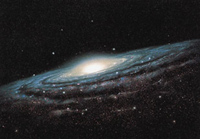|
From N-Toku to N-Spe
The frequency of N-Toku programs gradually
increased from once a week in 1976-77 to twice weekly from 1978-83 and
finally three times a week from 1984. As time passed, some people began
to feel that the N-Toku approach to programming had become too rigid.
After much discussion, in 1989 NHK Tokushu changed its name to NHK Special
and adopted a radically new policy: the fixed programming slot would
be cut to once a week on Sunday, and other documentaries would be produced
flexibly in response to circumstances.
Just as these changes took effect, a series
of dramatic events unfolded. The Tiananmen Square Incident and fall
of the Berlin Wall gripped the world's attention. In Japan, headlines
were dominated by the Recruit Scandal, the new consumption tax and the
death of a well-loved entertainer, Misora Hibari.
The newly created NHK Special, nicknamed
N-Spe, first hit the airwaves with a three-night series called Can
Politics Be Reformed? The Impact of the Recruit Scandal. Other
series running for three to six consecutive evenings soon followed:
Questioning Nuclear Power, The Hibari Era, Questioning Politics, The
Nuclear Age. All told, N-Spe broadcast 165 programs in 1989,
which remains the most prolific programming year in the history of either
N-Toku or N-Spe.
The century's turbulent end
As the 90's began, the pace of events grew
more charged both in Japan and abroad. On January 17, 1991, the Gulf
War began and N-Spe responded quickly. Three days later on January 20,
N-Spe presented The Gulf War, and
a week later, on January 26, followed up with
Gulf War Document: The First 10 Days. During the course of a
two-week period leading up to and beyond the end of the war on February
28, six more specials followed which considered the impact the war and
its outcome would have on the world.
In December 1991, the Soviet Union collapsed,
and the world order based on the U.S.-U.S.S.R. Cold War rivalry started
to undergo a radical transformation. By February 1992, N-Spe had already
run four programs on this theme, and it continued to broadcast many
more programs on the dynamic changes unfolding in the international
political arena.
|
|
At home, a series of natural disasters
rocked Japan. On June 3, 1991, a lethal pyroclastic flow billowed down
from the erupting Fugen peak of Mt. Unzen. This was followed on July
12, 1993, by a terrifying tsunami that swept over a residential area
on the island of Okujiri. Then on January 17, 1995 the Great Hanshin-Awaji
Earthquake struck the Kobe area. N-Spe covered the earthquake with broadcasts
of Direct Hit from Below on January 20 and Victims of the Great Hanshin
Earthquake: The First 20 Days on February 5. In the 10 months from February
17 to November of 1995, N-Spe ran a 10-part series on reconstruction
and ways to build a disaster-resistant city.
In 1995, a series of incidents perpetrated
by the Aum Shinrikyo cult led to the program Aum Shinrikyo: Rise of
the Vile Kingdom, which was shown on April 16 after the cult's facilities
were investigated. Viewers found the subject compelling, and the rating
of 33.1% remains a record for N-Spe presentations. NHK Special produced
a further three programs on Aum.
|
New realms
N-Spe has ventured into worlds that were previously thought to
be beyond the reach of television. The
Universe Within: The Human Body used state-of-the-art computer
graphics to visualize the drama of life in a micro-realm that
not even the best microscopes could observe. Planet of Life offered
a stimulating description of the wonders of evolution in a series
going back to earth's earliest days. Planet of Ocean cast light
on the murkiest depths of the sea, while A
Galactic Odyssey and other programs about outer space took
viewers on a spectacular trip through the cosmos. Einstein employed
the latest digital technology to explore new frontiers for television,
depicting the human mind and workings of the brain.

A Galactic Odyssey
|
Major Programs of NHK Special 1989-95
|


